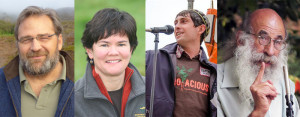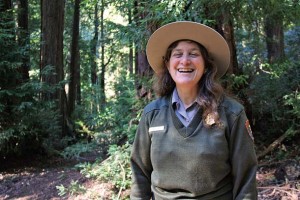For four decades, Ron Felzer has been teaching ecology and natural history at Merritt College. These days, though, he’s not often on campus in the Oakland hills.
Partly, that’s because his first love is field education. From the Sierra to the Mojave to Hokkaido, Felzer has taken his students all over the nation and the world. Some students have studied with him for decades, following a career that spans an era when field studies blossomed first at Merritt and then elsewhere.
Felzer retired from full-time teaching in 2004, but he still teaches part-time and is passionate about the importance of getting students into the field.
But these days, Felzer’s having trouble getting approval even for the small number of courses he’d still like to teach, and it’s hard to see much fresh blossom in the field classes at Merritt.
Like so many programs that get state funding, the courses taught by Felzer and his colleagues, including Daniel Edelstein, Hank Fabian, and Robin Freeman, are under severe pressure.
“The budget is bad, but we have been cut to the bone,” Felzer says. “We’re looking at a minimum cut of $12 million in our district. We have cut our basic biology classes from 37 units down to 21.” And field studies are hurting even more: “We’re down to two classes a year for the whole program. When I was teaching full-time, I was teaching four or five classes a year.”
Field Education, Circa 1970
When Felzer walked in the door at Merritt 41 years ago, the college campus was down in the flats on Martin Luther King, Jr. Way (which was then Grove Street). The school was a hotbed of innovation, and Professor Charles Ford was coordinating an experimental program called urban studies.
“The students studied every aspect of Oakland — the rocks, the faults, the Bay, the politics, the government,” Felzer recalls. “I thought, Wow, this is incredible! They are looking at everything at once, and I don’t know if that had ever been done before. Maybe it hadn’t.”
But Felzer wasn’t expecting teaching to be his career. “Teach? I never thought of it in my life. It was 10 bucks an hour, 20 bucks a week,” he says. “I wanted to be a ranger. I wanted to be out in the parks.”
Soon, the urban studies faculty started doing a similarly expansive desert studies seminar, and Felzer then added a Sierra course. Both had field components, so being “out in the parks” was part of the package.
“Within a year, I was in on the desert studies. And then we had a forest ecology-mountain studies. At that time, Feather River College was part of our college district, so students could go up there.”
From there, the program grew and grew. “I said there’s a lot of other places to go. Since then I have created probably 150 to 200 courses. Natural history of Lassen, natural history of the Great Basin, the Everglades, Okeefenokee Swamp in Georgia.”
Looking back now, it’s hard to believe such a breadth of courses were offered, and for so little money. Students had to cover travel expenses, which could be considerable for far-flung destinations, but the tuition started at nothing. “In the ’70s, there was no charge. We had huge classes, sometimes 10 to 12 classes a year in that vein.”
Along the way, Felzer taught hundreds of students, and many of them have gone on to work as rangers or in other capacities for regional, state, and national park units.
Golden Age Gone?
Now, however, cuts are the order of the day, and field seminars have been among the courses stripped from the course catalog, with a bare minimum making it through the administrative gauntlet each year.
To shore up support for the program, Felzer has gone to the faculty and gotten its vote of support for field education, and he says he still thinks local support for Merritt and other parts of the Peralta Community College District is strong.
“I wish we would split the state into two, those that don’t like taxes and those who are willing to pay for things–we live in a place like that,” says Felzer. “Voters in our college district–every time we have a bond issue, it passes. They can’t pay for salaries, but we’re putting in solar panels and building other new facilities. The community supports us.”
But with even the nursing program at Merritt hunting for grants to fund basic anatomy classes, it’s hard to see a happy ending for field seminars.
“This budget that’s shrinking from the state, shrinking to the school, shrinking to part-time teachers. I’d hate to be the person in charge–all it is where are we going to cut now?”

.jpg)



